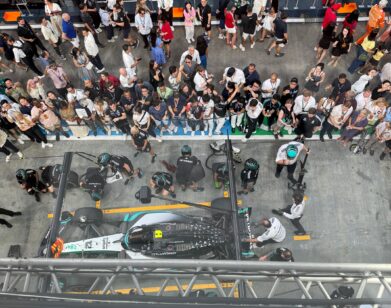Photographer Bruce Gilden Takes Us On A Stroll Through A Bygone New York

NYC, 1979.
It was gritty, trash-ridden, and alive. The energy was rampant, the music was loud, and the people were full of rage. New York City in the 1970s and 80s was something to be lived, and luckily, the photographer Bruce Gilden was there to live it—and capture it for the rest of us. Gilden has been shooting New Yorkers on the street for over 40 years, culminating in monographs like Facing New York, Coney Island, and most recently, Lost and Found. The book’s title is at once spiritual and literal; while packing for a move, Gilden discovered hundreds of film reels and negatives of his photographs taken between 1978 and 1984. Forty years later, he has shared around eighty of the previously unpublished photos, all taken throughout his beloved city. Though Gilden is known for his use of flash photography on the street, these photos—with the exception of three—are all taken without flash, embodying a grainy, humanistic softness. However, Gilden’s rough-edged aesthetic, his focus on form, and his relentless empathy for his subjects remains, flash or no flash.
Below, Gilden takes us on a free-wielding tour through his New York, each of his photos bursting with personality and the tales of lives long-lived. Gilden’s photos are a real look into the real New York, or, as he puts it, “a vision of a long-gone New York City.”
———
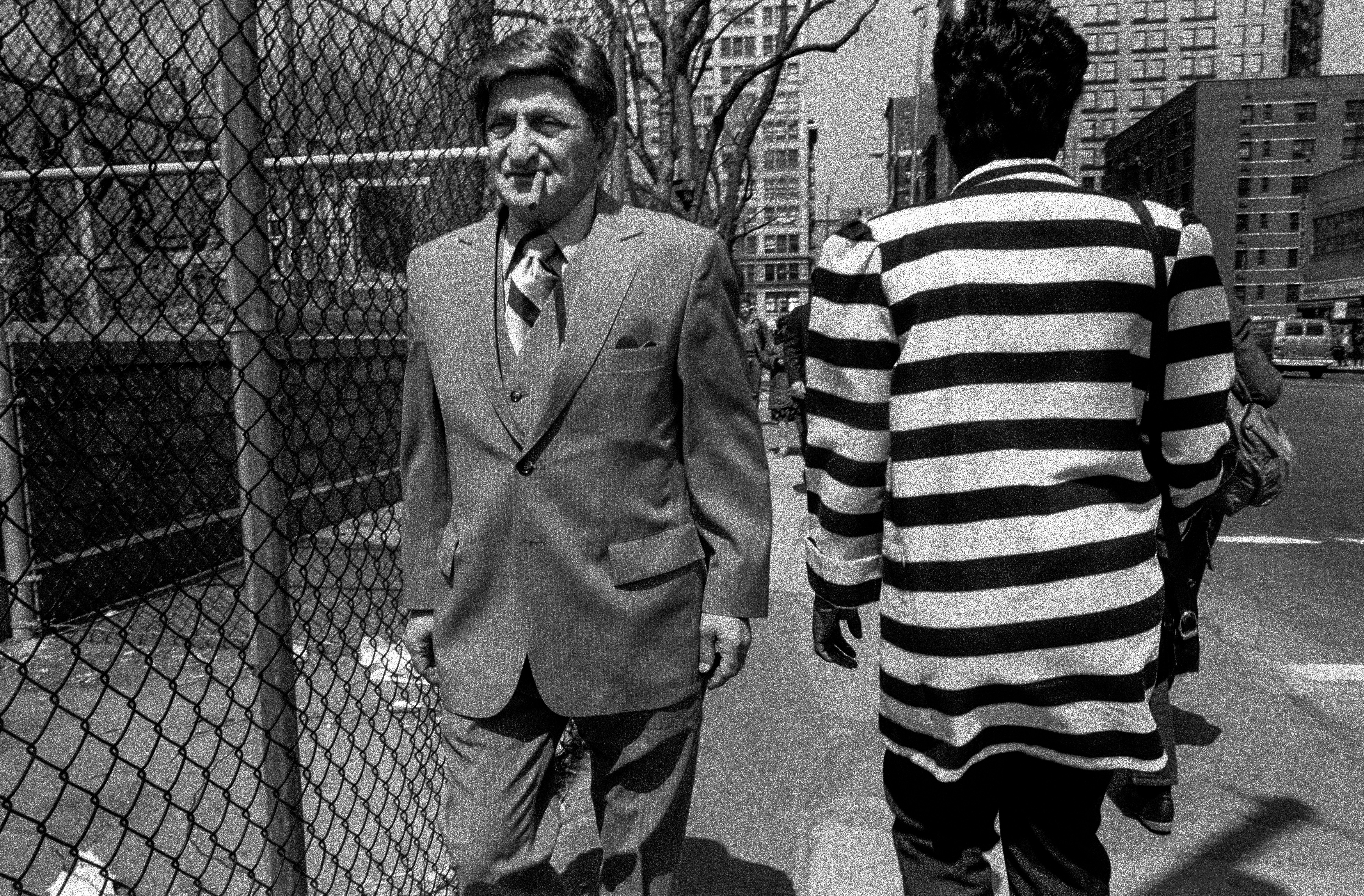
NYC, 1986.
“The first picture, you know, these pictures are more about the heartbeat of the city rather than the later pictures, which are about the heartbeat of the individual. All I know is, I saw this picture, I said, ‘Wow, that’s pretty good.’ And some pictures I like more than others. But to me, the guy, I can’t figure out if he’s got thick hair or he’s wearing a toupee with the cigar in his mouth. But it’s like two ships passing in the night. He’s coming to you and they’re both totally oblivious of the other. And it’s good that she has stripes or she stands out. You know, I’m very good with textiles. It’s just like an innate instinctual thing. So when I saw this picture, I said, ‘How come I didn’t print this?’ Originally, I didn’t. So this was not one of the ones … As a matter of fact, only one of the six pictures here were printed previously that I found in my house, okay. And it’s funny, it’s the one with flash. ”
———

USA. NYC. 1979.
“What I like about it is, at that time, which is very different than now. I mean, this is a time that will never reappear again. That New York that existed in the late seventies, early eighties, it was raw, violent, trashy. It was everything, it is everything I like. And if you look at, you know, the small details, that makes a picture. I love these two guys and I liked the peep show in the back. I can’t read all the things this has on here, but the window happens to go along very well with these two guys. And the funny thing is, I just saw the contact of this … I think I have it at my house. I don’t know why I have it at my house. I was leafing through something and I took about six or eight pictures of them, which I normally don’t have the opportunity to do, especially when people are working. They’re probably laughing at something I said because I’m in the middle of the street taking this picture. I have good bedside manner with people in the street because I’m quite streetwise. These are all candid. I never said anything to anybody. These people, maybe I might’ve said something as I’m approaching the car, they said something to me and then we had a dialogue. But all the other pictures, nothing was ever said to anybody, you know? And they were only probably one shot. That’s it.”
———
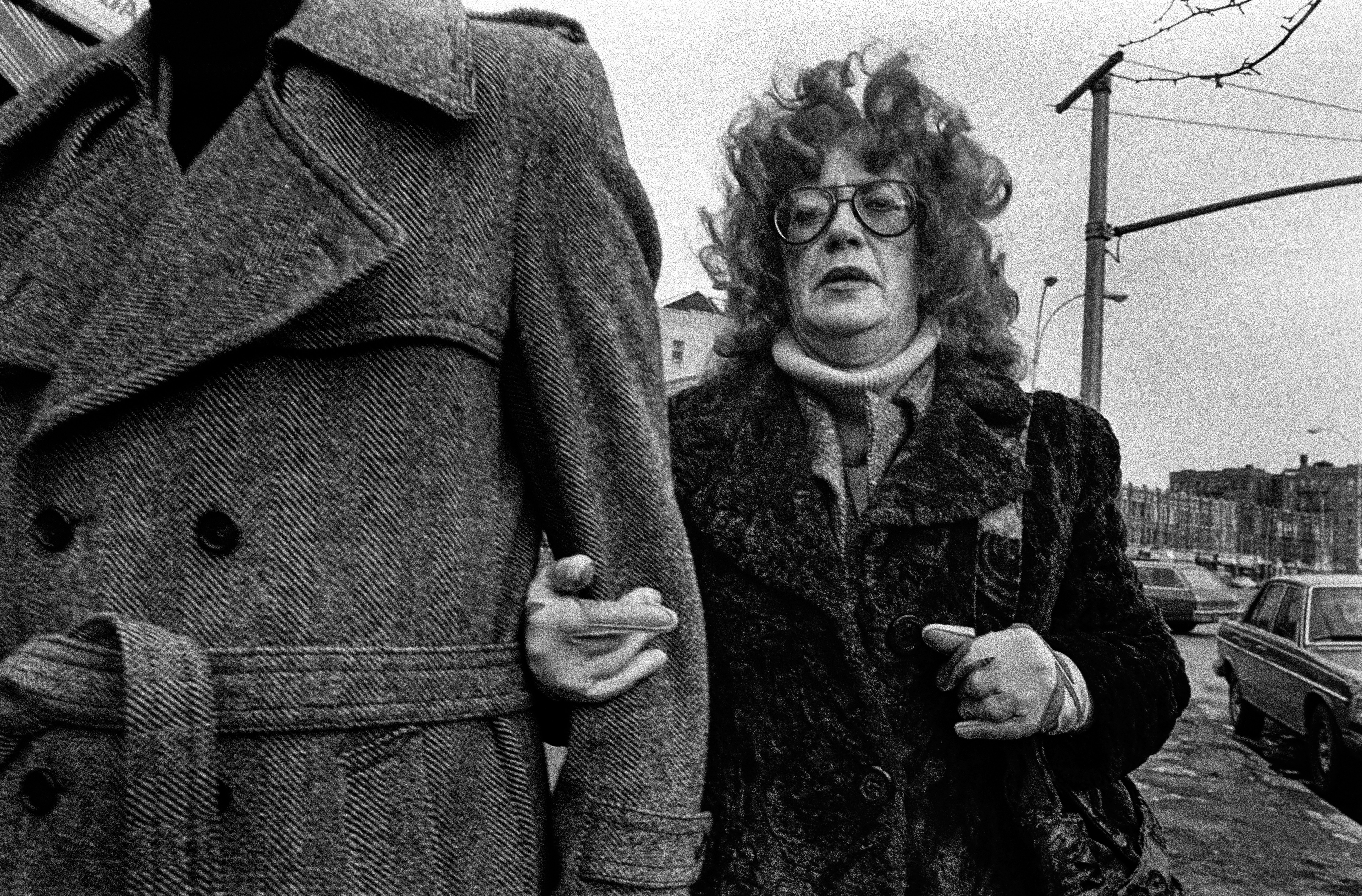
Brighton Beach, Brooklyn, NY. 1979.
“The next picture, my wife thought it was taken in Europe, but I proved to her that it was taken in Brighton Beach or Sheepshead Bay. In this period of time, I went to a lot of places in the city, okay? Because first of all, I was younger. I don’t think I controlled the frame as I did later on. Even though it is good control obviously, and not a formal picture—that’s not a problem. But I mean, later on, I became probably much more obsessed with that, without losing emotional contact with the people. What I like about the picture of the lady with the glasses is, it’s almost like she’s leading him, even though she’s behind him, to his own hanging. But that’s my idea. You know, you’ve got a belt wrapped around his stomach. You don’t see his head, or his head just got chopped off. I make up my own stories here. It’s eerie, I like it.”
———
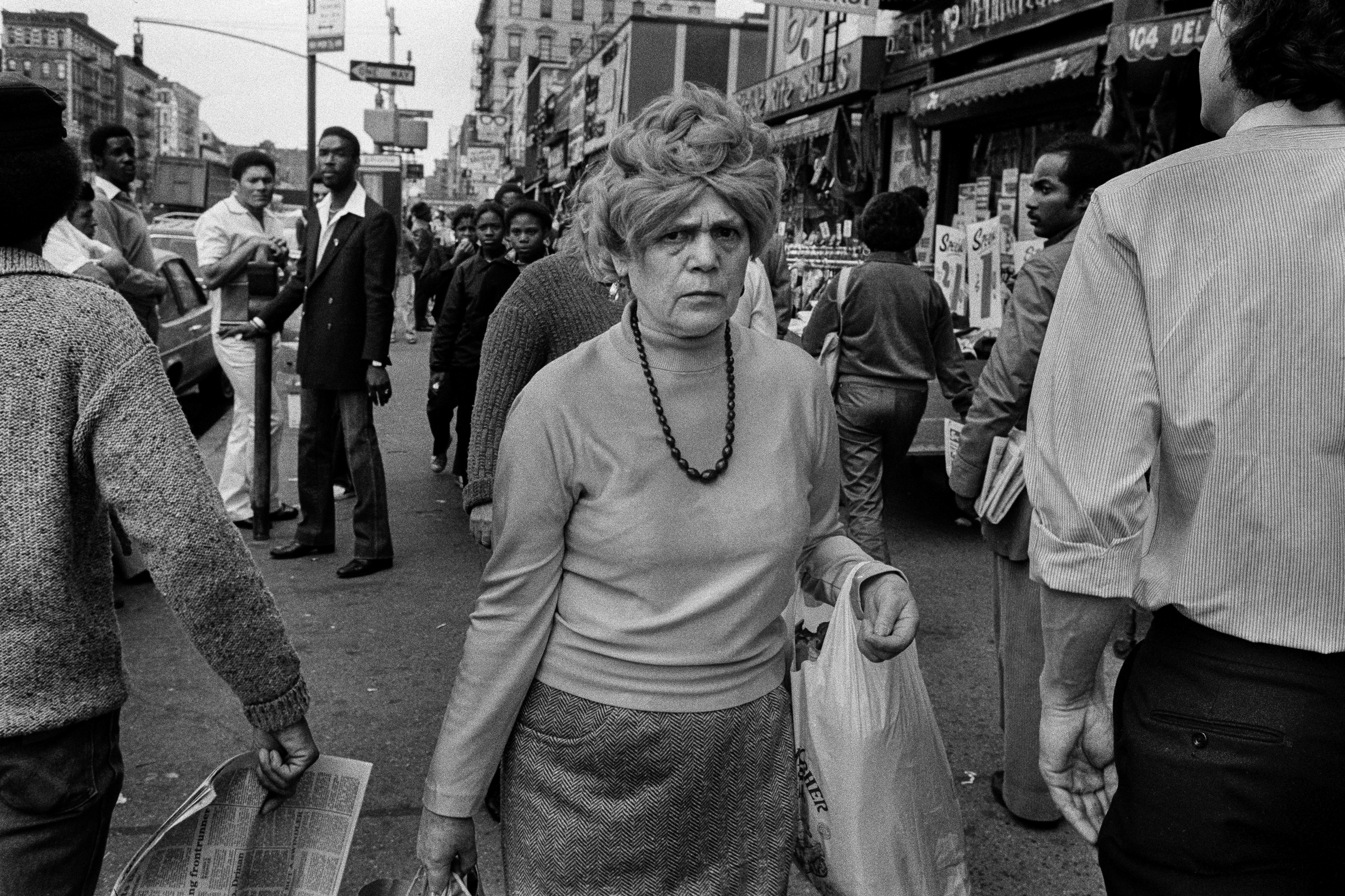
NYC, 1978.
“The next picture was probably taken on Delancey Street, where I also stopped going. And I think I stopped going to most of these places later on because, first of all, if I’m on Fifth Avenue or Broadway, it takes 20 minutes, 25 minutes each way to go downtown. And if there’s nothing there, then you wasted another hour in photo shooting time. And the other thing was when I switched to flash, the sync speed was a 50th of a second. So what that means is that, if the buildings weren’t high, I couldn’t really use the flash until a later point in the day. So I prefer to stay on Fifth Avenue, especially on the west side of the street because the sun would be blocked by the buildings, so I could use my flash. So I think that was probably the prime reason that I stopped going to these areas. And I liked that picture of the lady. I don’t know if that’s her hair or she’s wearing a wig. But I also like that all the guys in the back are looking at me hard, like as if I’m taking their picture. But you know, I’m a little bit of a maniac, so I can work in the worst areas, you know? The thing is, I stand up for myself.”
———
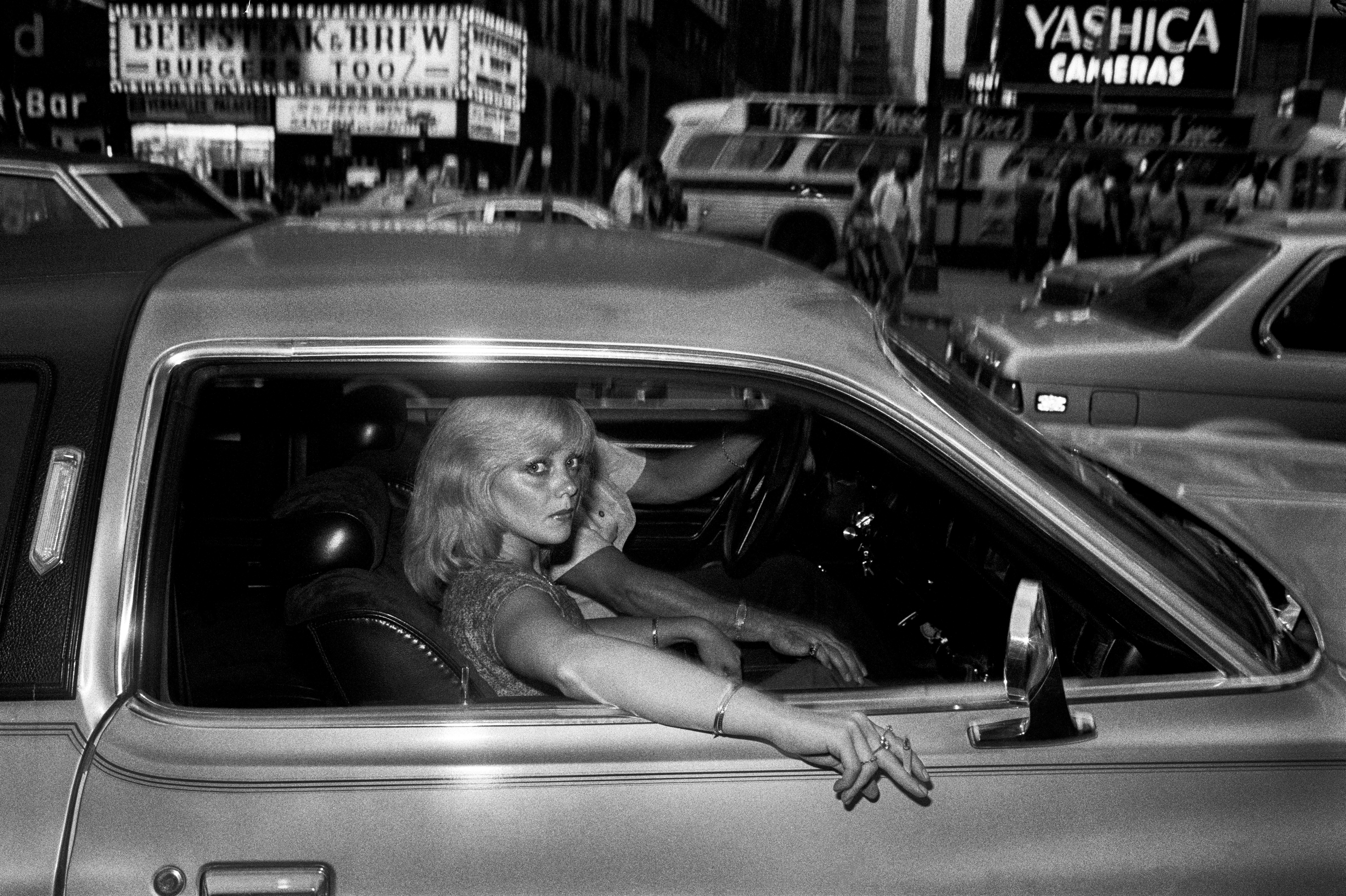
NYC, 1978.
“In the book of the 75 pictures, there are only three pictures with flash. And this … I happen to like this picture. I just love her. But I also liked the guy’s hand that’s on like the stick shift or something. It’s a little detail, and I like her attitude and I like her cigarette and I just like the picture. And well, the background makes it on Broadway, I presume. It looks like Broadway.”
———
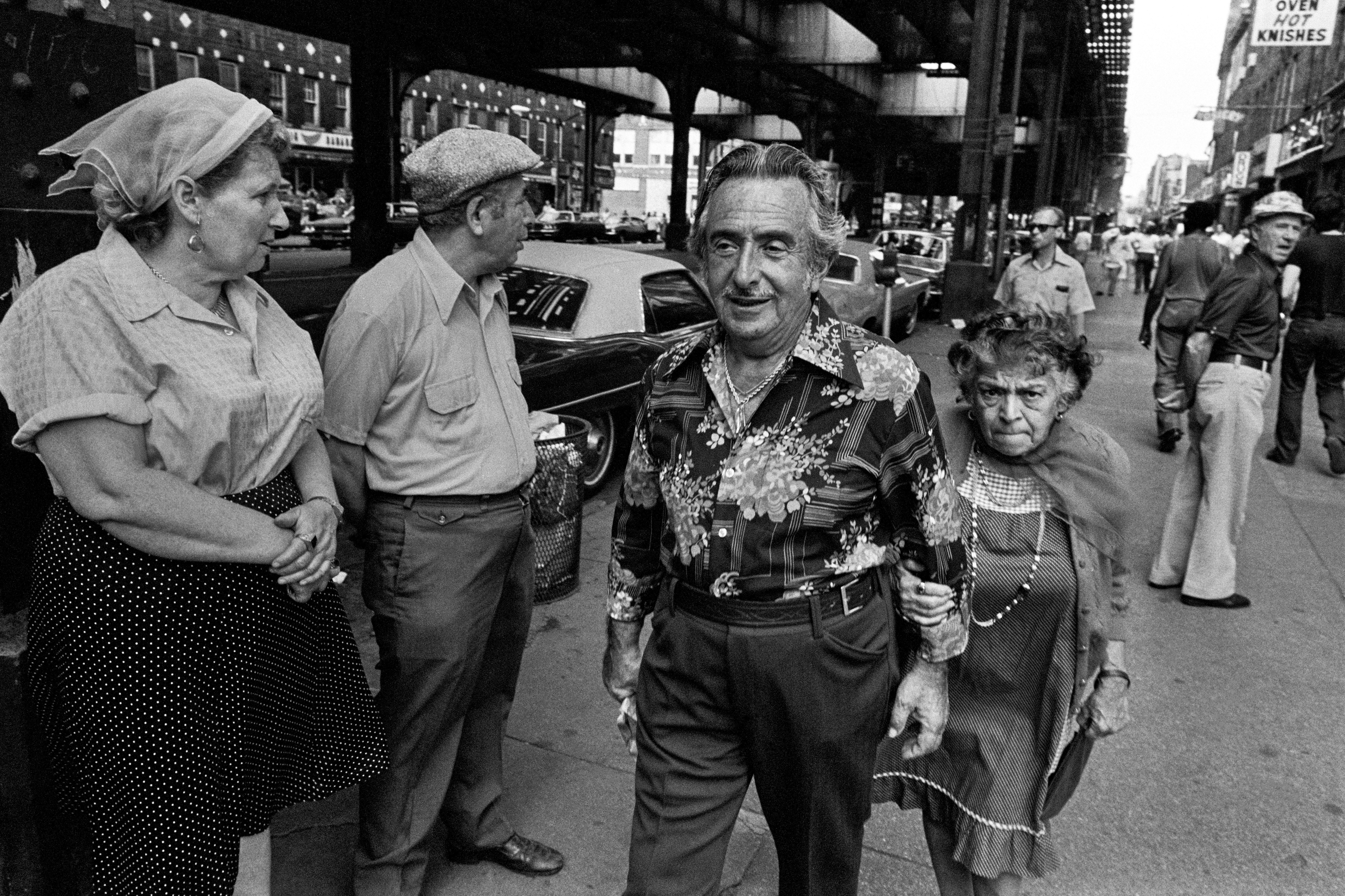
Brighton Beach, Brooklyn, NY. 1978.
“This was a picture that had a little agita over it because when we discovered the picture at Magnum, we found the contact, but we didn’t find a negative yet. So that night I was so upset because I really liked this picture. And I didn’t know if I’d find it. So, the next morning when we got on the train to go into the city and we got to Magnum, luckily I found it. I was so happy. It was like a treasure hunt. The interesting thing about these pictures for me was that it was like doing a new body of work, even though it’s from 1978 to 1984. It’s not like these pictures came from 40 years ago. You know, it’s like looking in somewhere and finding, you know, $1 million or $100,000 that you never thought you had. And the good part about it was, I already shot it.
But this picture was very interesting for me also because this is in Brighton Beach. And when I was shooting in Brighton Beach, I used to drive out from Soho to Brighton Beach on Saturday morning. I never thought I got much there because of the fact that it looked a little too folkloric for me. But after 40 years, you don’t feel the same. You know, the pictures have a life of their own. And this picture, I love the fierceness. I guess that’s his mother, how she’s looking at me. You know the fear. She’s protective of her young, and he’s totally oblivious to everything going on. And she must be so worried about her son because he didn’t have the same struggle as she had in life. So I like that one.”




